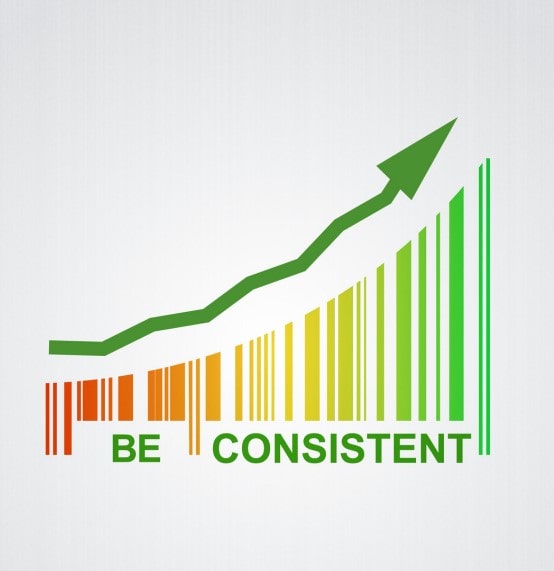How To Make Better Decisions For Your Business
Effective budgeting and forecasting is key to successful business decision-making. With the exception of small businesses with a few employees, it can become increasingly challenging to manage the financial planning and analysis process in a way that facilitates timely and responsive business decisions.

Contents
- Introduction
- Step 1: Set goals for your budgeting & forecasting process
- Step 2: Review your current processes
- Questions to include
- Step 3: Create a list of priorities to improve
- Step 4 : Increase consistency and efficiency
- Step 5 : Recognise and manage barriers to change
- How to increase buy in
- Use the right technology
- FP&A Team
- How Account-Ability can help
- Next steps
We explain the ways in which integrated budgeting controls and financial planning and reporting software – such as Corporate Planner, available as a cloud service through Account-Ability – can help you increase your operational efficiency, make strategic and operational decisions related to business growth, and improve your bottom line.
Get Your Free Copy
If you want to improve the efficiency of your business the key is to save time budgeting and forecasting.
We have put together our expert knowledge to help you and your business.
Use our free guide to learn more about:
- Business decision making
- How to increase buy-in
- Using the right technology
Receive your free guide by filling out the form on this page.

Get Your Guide Now
Indroduction
We explain the ways in which integrated budgeting controls and financial planning and reporting software – such as Corporate Planner, available as a cloud service through Account-Ability – can help you increase your operational efficiency, make strategic and operational decisions related to business growth, and improve your bottom line.
Step 1: Set Goals for your Budgeting & Forecasting Process
- The key goal of the budgeting and forecasting process is that it must be sufficiently accurate and timely enough to support the making of good decisions.
- When it comes to budgeting, forecasting, and reporting, a fundamental principle to keep in mind is that the actual outcome will typically diverge from the initial plan, and the process itself may be time-consuming. Therefore, the key metrics to priorities are the accuracy and timeliness of the process, as they enable effective decision-making and facilitate prompt notification and re-forecasting when actual performance deviates
from the initial forecast. This allows for timely corrective measures to be implemented, which is essential for ensuring optimal outcomes. - It needs to be the basis for understanding and managing performance. The reporting and forecasting process needs to provide a basis for an ‘Accountability Review’ in which reasons for current performance are understood and provide a means for moving forward.
- It needs to be the means by which the business can improve The goal of all businesses is to improve overall performance; the budgeting and
planning process needs to be a way of articulating that, quantitatively.
Step 2: Review Your Current Processes
Budgeting and forecasting processes can become entrenched over time and risk becoming out of step with the changing needs of the business.
Spreadsheet-based processes are often inadequate for accommodating large and growing volumes of complex data. By sending out multiple spreadsheets for completion and then consolidating them, they slow down the process. Their single-user nature impairs communication and risks the business of working with different versions of the data.
Furthermore, relying on spreadsheets for your decision-making, risks breaking your business into information silos – in which decisions are made by teams and line managers in isolation, outside of the overall context and workflows of the business. Reviewing your current budgeting & forecasting process is the first step to improving its responsiveness, accuracy, cross-functional integration, and decision-making value.

Questions To Ask Include:
1. Are your present processes sufficiently accurate to make informed decisions?
Does the current process and technology (e.g. spreadsheets) constrain the modelling of important areas of the profit and loss statement (P&L), Balance Carried Forward or Balance Brought Down (C/F or B/S) to the extent that making informed decisions is compromised?
2. Is the planning process cycle too long?
In business, nothing stands still, and directors and line managers always need up-todate information on new and current processes within the organisation. If the annual budgeting process takes three months, and the quarterly re-forecasting process takes four weeks, the business is always going to be ‘behind the curve’ (and importantly the competition) in making decisions. Much faster planning and re-forecasting cycles are
required today so that businesses can react to both adverse consequences and new opportunities.

3. Is the process too cumbersome or resource-intensive?
No business can afford cumbersome or unnecessarily resource-intensive processes. It is worse if that involves the planning and forecasting process because decision-making will be slowed and impaired. The process is too long and cumbersome if it involves sending out spreadsheets to managers to be completed and then later checked and consolidated by Finance staff. Compared to modern budgeting reporting and planning software, this is inherently inefficient, magnifies the risk of serious errors creeping in, and negatively impacts decision-making and collaboration.
4. Are there areas of modelling containing excessive detail that adds no value?
No business can afford cumbersome or unnecessarily resource-intensive processes. It is worse if that involves the planning and forecasting process because decision-making will be slowed and impaired. The process is too long and cumbersome if it involves sending out spreadsheets to managers to be completed and then later checked and consolidated by Finance staff. Compared to modern budgeting reporting and planning software, this is inherently inefficient, magnifies the risk of serious errors creeping in and negatively impacts decision-making and collaboration.
5. Does your process start with the vision & strategic plan?
This is no ‘head in the clouds’ criterion, but clearly the process needs to be rooted inwhere the business wants to get to, otherwise how can it proceed in a systematic manner with operational plans and with management accountability? Does the process start with your vision and strategic plan, and then break this down to the day-to-day elements that need to be achieved to deliver it?
6. Does your process look sufficiently deep into the drivers of performance?
Just as planning in excessive detail is an enemy of the planning process, so is failing to understand and to model sufficiently the factors driving performance and risk. Do your operational plans clearly articulate what drives performance so that you know how performance will change, and why? This is far more difficult if the process is based on a series of discrete spreadsheets, rather than a modern dedicated budgeting and planning system with access and version control such as Corporate Planner.
7. Does your process focus too much on ‘looking back’ and insufficiently on ‘looking forward’?
Obviously the past and present informs the future, but planning is fundamentally about moving the business forward to achieve future quantified goals
Important in this is the ability to model and compare different scenarios, including changes in the organisational structure, market, products, services, suppliers, sources, and cost of finance. A modern integrated budgeting and planning system, such as Corporate Planner, makes this far easier than a process dependent on spreadsheets. Plans, reports, and scenarios can be created over any period in weeks, months, quarters, years etc, and they can always be compared to historic performance, which is held in the same database. Another important feature of a dedicated budgeting, planning, and reporting system is Its ability to plan and analyse over any rolling period, including a cross-financial year. This makes it ideal for creating a rolling 18-month (or more) re-forecast for use, in say, Accountability Reviews’ with line managers
8. Is your process able to balance between Central and Business Unit needs?
Whether or not your needs and business culture leans more to centralised control or to a devolved line model, you will want your budgeting, planning, and reporting process to meet the needs of both the 'centre' and the ‘line’. It can do this if the system holds not only actuals data (drawn from the finance, ERP, and other transaction based systems, including calculating KPIs), but also, the agreed budget, budget submissions from line managers, re-forecasts, and scenarios. This enables ‘top-down’ planning assumptions and constraints to be defined, budget submissions to be created and reviewed, and the budget to be agreed, signed-off, and locked. It also enables line managers to receive reports, and to analyse key data and adjust operational actions on a self-serve basis, significantly reducing the wasted resource and time lags in legacy based performance management and reporting
systems.
9. How smoothly and quickly are the outputs from your process communicated across the business?
The ultimate purpose of the budgeting, planning, and reporting process is for Directors and managers to make the best, timely decisions to achieve quantified goals of the business, and to be able to adjust these operational decisions (and from time-to-time strategic goals) in the light of events. A key part is to be able to understand performance, the reasons for performance, and how it can be changed. Directors and business unit managers across your business need this information, with the assurance that it is a single version of the truth and delivered promptly. The process will be hugely more efficient, reliable, and timely if it utilises a modern budgeting, planning, and reporting software system, rather than inter-linked spreadsheets. Such a system will be able to update data automatically from direct links to transaction systems; automate self-serve management reporting and analysis; create an integrated model of P&L, B/S and C/F complete with KPIs and covenants (and Statutory Financial Consolidation if required); and produce and control rights-based access to budgets, forecasts, and scenarios. As a result, Directors and managers can receive the information they require, as a single version of the truth, in a seamless and efficient way

Step 3: Create a List Of Priorities to Improve
While your performance review is likely to highlight several areas for improvement specific to your organisation, it is likely that speed, modelling clarity, integration, and ownership and accountability will be key areas for improvement. In this case, aspects to prioritise include:
1. Reduce your data processing requirements
The more time spent accessing and processing data, the less is available for considered planning. An improvement plan could, therefore, involve automating links to the finance and other transaction-based systems eliminating the need to send out, process, and then re-consolidate spreadsheets, reducing the number of data points, and removing activities that add no real value – focusing the process on the real drivers of income, cost, and activity, and the figures that people discuss.
2. Align your KPIs and performance metrics with your business objectives
Review your budgeting and financial planning KPIs to ensure they tie in with your Strategic Plan since you want these metrics to assist you in driving your planning process forward.
3. Invest in technology to save time and resource
Targeted investments in budgeting and planning software will help drive process efficiency and productivity, as well as enable consistent data sharing and informed decision-making.
4. Improve the modelling of key areas first
Focus your efforts on improving modelling in the key areas first. For many businesses this means integrated P&L, Balance Sheet and Cash Flow, sales, and profit margins first, before rolling this out across other areas. Your priority areas may be different.
5. What role can predictive analytics and AI play?
Advanced data processing software algorithms, including predictive analytics and AI, are hot topics in the field of business software. However, for most businesses, these specialist solutions will not score as a high priority in improving budgeting and forecasting processes. More immediate and larger savings and benefits can be pursued by focusing on core areas first in the way described here. Once these ‘wins’ have been achieved it would be appropriate to see what additional benefits may be gained by overlaying an AI or intelligent search solution.
A Dedicated Budgeting, Planning, Forecasting, and Reporting System will…
- Replace processes that depend on multiple spreadsheets, with their inefficiency, vulnerabilities to error and opacity, with a dedicated budgeting, planning, and forecasting system, accessible by all your stakeholders.
- Store data and planning versions and scenarios in one place and provide rights-based access controls for different users, thus ensuring that managers work with the same figures when collaborating on business decisions.
- Feature tools and algorithms to make budgeting and planning processes quicker and more efficient, drastically reducing the amount of time and resources spent on these tasks.
- Enable a level of scenario building and forecasting which is simply not possible for processes that rely on spreadsheets. Make connections to source data easily and reliably and provide web-based access from mobile devices and deliver enhanced reporting capabilities.

Step 4: Increase Consistency and Efficiency
Whilst every business will have a different set of detailed priorities to improve their budgeting, forecasting, and reporting process, the overarching needs boil down to ensuring consistent data is produced efficiently and promptly and is sufficient to create, review, and amend operational plans that are ‘hard-wired’ to the strategic goals.
As we have seen, this is difficult (even impossible) to achieve if the planning process relies on sets of spreadsheets sent out to line managers to complete, and then returned to Finance for ‘consolidation’. The process is too slow, too resource-intensive, too vulnerable to error, too limited, and unable to deliver a ‘shared perspective’.

Increasing consistency and efficiency is facilitated by investing in a dedicated budgeting, planning, forecasting, and reporting solution that presents a sole source of truth on which to base decisions, and which also enables easy reporting and rapid decision-making. With multiple user access based on role-based user rights, and with the ability to hold actuals, budget, budget submissions, re-forecasts, and scenarios, and with integrated modelling of the business, it eliminates the time-consuming, resource-intensive process of working with spreadsheets.
At a stroke, you slash time off the budgeting cycle, and re-forecasts and scenarios can be created in ‘minutes’. Month-end reports are available on a self-serve basis the instant month-end accounts are closed. Accuracy, consistency, and efficiency are all increased. Directors and line managers have the up-to-date information they require to make more informed and more timely decisions.
Step 5: Recognise and Manage Barriers to Change
- Any change to a process that runs across the entire business, is likely to meet barriers to change, possibly more so if it is seen to be driven from the centre by management.
- ‘It can’t be done.’
- ‘We’ve never done it this way before.’
- ‘We don’t have the technology or resources to implement this change.’
- Because the budgeting and forecasting process is of strategic importance, any initiatives for change will need to be driven from the centre. However, it is possible to improve buy-in, by ensuring transparent communication and project management throughout the process, and
by tying the changes to the clear goals and process improvement priorities identified in the previous steps.
Get Your Free Copy
If you want to improve the efficiency of your business the key is to save time budgeting and forecasting.
We have put together our expert knowledge to help you and your business.
Use our free guide to learn more about:
- Business decision making
- How to increase buy-in
- Using the right technology
Receive your free guide by filling out the form on this page.

Get Your Guide Now
How To Increase Buy In
By its nature, the budgeting, forecasting, and reporting process is likely to be owned within Finance, but the users and their needs will be spread across the business.
If the process is to have its maximum effectiveness for the performance of the business, input to process change from line managers will be beneficial. By engaging early on with a subset of key line managers with the greatest interests (and knowledge) of the problems with the current process, and trialling improvements in their areas, you can maximise the successful outcome of the project. They are likely to become ‘champions of the new’, and be able to assist the wider roll-out, based on lessons learned. This will help you achieve fast implementation, avoid unforeseen costs and delays, and maximining ownership within the business.
Creating early ownership in line managers will drive expectations and help solve collaboratively key process issues. Not only can this increase buy-in, but with the use of the right technology (see below), it can result in an implementation with minimum disruption, and which costs less, and delivers more.

Use The Right Technology
Another key barrier to change is not having good enough technology to implement your process improvements.
Investment in a dedicated budgeting and planning solution is likely to score very highly. It
would eliminate any ‘blockages’ and shortcomings in your current process, including
replacing multiple, hard-to-manage, and resource-intensive spreadsheets. Without the right
technology, you will struggle to make the process faster or more efficient or to deliver across
the business an ‘integrated single version of the truth’.
In a nutshell, investing in the right technology can:
- Strengthen the business on an ongoing basis.
- Get the business ready for future challenges.
- Bring more certainty to outcomes.
- Create more dynamism.
- Help in making the right decisions more quickly.
Updating your technology will indicate your clear commitment to a planning and forecasting process for the business that is consistent, efficient, and speedy. It will enable managers to work with one version of the truth so that decisions are made across the business based on consistent information. Businesses can generate integrated forecasts and scenarios quickly with the help of appropriate technology, facilitating a process by an accountability review for effective performance management. This allows businesses to look ahead and gain insights into how performance will evolve and why.
FP&A Team
Your Financial Planning & Analysis (FP&A) team - whether a single individual or many - is especially central to this process, and when it comes to roll-out you may need to consider the structure of your team and their responsibilities, perhaps strengthening financial business partnerships within the line.
FP&A should be engaged as early as possible at all stages of the process.
How Account-Ability Can Help
- Our Corporate Planner Suite integrated financial planning, forecasting, and reporting platform can reduce the time you spend on budgeting and forecasting in your business, and help you achieve better decisions. Whatever sector or size, investing in budgeting and forecasting software offers tangible real-world advantages to any business looking to improve planning integration and transparency, mitigate operational risk, improve planning resource efficiency and speed, and implement an effective performance management system.
.jpg?width=1000&height=297&name=Screenshot%202023-07-05%20091453-min%20(1).jpg)
We can help you streamline your budgeting, forecasting, and decision-making process in several ways:
- Reduce Human Error – A dedicated budgeting platform is far less prone to inconsistencies and human errors than a system dependent on multiple spreadsheets, improving the accuracy and validity of your financial data.
Increase Productivity – Our streamlined and customisable Corporate Planner platform can be tailored to the needs of your team to save time and money on data processing and forecasting tasks, enabling informed decisions in fast-paced business environments. - Transparency and Accountability – Our budgeting and forecasting tools can be accessed through the cloud via any internet-enabled device, with a clear chain of accountability and advanced communication tools that allow real-time collaboration between stakeholders on important strategic decisions.
- Better Data Management – Corporate Planner has a range of inbuilt forecasting and data management tools that help companies transform raw data into powerful digital assets they can use to drive growth plans, forecast demand scenarios, and establish real-world benchmarks for success and performance parameters.
- Advanced Reporting – Corporate Planner has a suite of powerful built-in reporting and dashboard functions capable of reporting everything of significance to a business’s performance, be that: Statutory Consolidation; integrated P&L, B/S, C/F and financial key ratios, through to key sales, production, and overhead reporting.
Corporate Planner Suite is an award-winning software, used by nearly 5,000 organisations
across Europe and by investing in it you can:
- Strengthen your business on an ongoing basis.
- Get your business ready for future challenges.
- Bring more certainty to outcomes.
- Create more dynamism.
- Help make the right decisions efficiently.
Next Steps
Thank you for downloading this guide. To find out more about Corporate Planner, and the potential of an integrated planning and forecasting system to save you time and money when making business decisions, please get in touch to arrange a free demonstration of our advanced software platform today.
Get Your Free Copy
If you want to improve the efficiency of your business the key is to save time budgeting and forecasting.
We have put together our expert knowledge to help you and your business.
Use our free guide to learn more about:
- Business decision making
- How to increase buy-in
- Using the right technology
Receive your free guide by filling out the form on this page.







